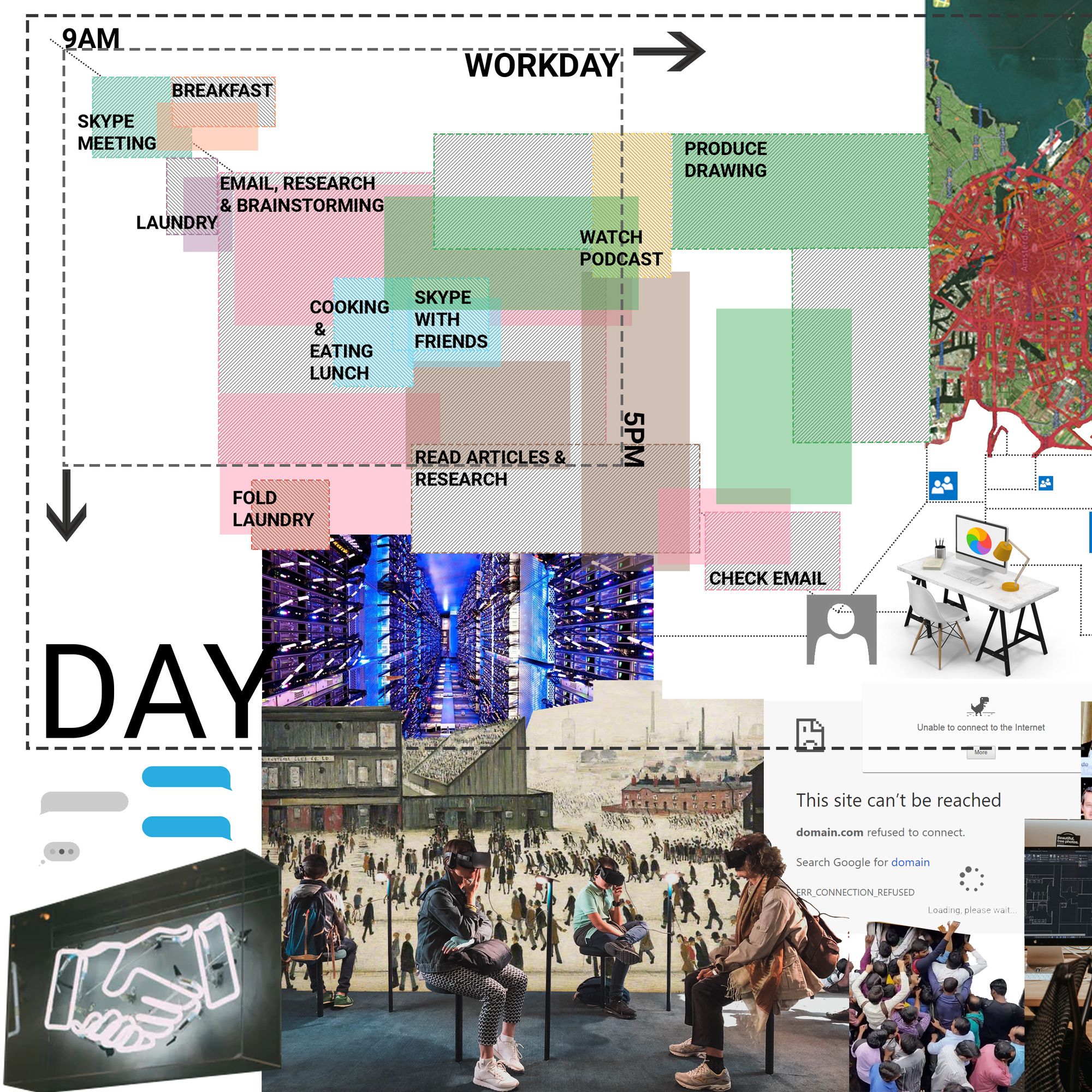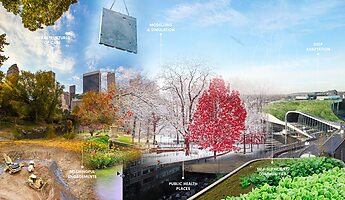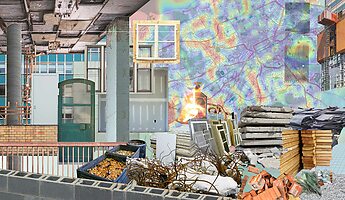As those of us who are fortunate enough to be able to stay at home become accustomed to it, we realise that we do not need to be in a specific physical place in order to undertake our work. In April 2020, statistics released by the UK's Office for National Statistics showed 49.2% of adults in employment in Britain were working from home, as a result of the social distancing measures introduced in response to the coronavirus pandemic.
As companies such as Twitter and Facebook announce that many, if not all, of their employees need never return to the office unless they want to, we ask what then is the office for? Are office buildings merely a material and energy intensive way of gesturing towards an idealised separation between life and white-collar work? How can we start adapting our offices and workplaces beyond 1.5m rearrangements to host formats of engagement that cannot be met elsewhere?
More-than-human hospitality
We know that engaging with the material and meeting in person affords different ways of thinking and communicating, beneficial not only to our mental and physical selves, but also in the building of our relations with colleagues. Rather than workplaces being designed solely for the carrying out of screen-based tasks (asking what does the worker need?) we ask instead, what does the human need? What does this individual need? What does this community need?
As well as retrofitting office buildings to provide comfort, meet WELL criteria and adapt readily to host multiple events and meeting formats throughout a day, we must also design offices for the inclusion of different kinds of productive programme. Office gardens (for instance) can provide convivial places just as suited to taking a break as hosting a meeting. Designs attentive to local ecologies can provide welcome habitats for non-human urban cohabitants. Gardening and small-scale urban farming could be undertaken onsite as part of a salaried work-day; the benefits of mindful, physical activity on daily productivity are well known. Offices of a certain scale could also extend their programmatic infrastructures outwards to provide public events spaces, cafes, green places, solar energy and waste heat generation, composting and other forms of neighborhood scale waste management. In this way office culture could promote fundamental shifts in our ways of working, sharing and producing, meaningfully engaging with and contributing to local circular economies.
Decentralisation of the day
When we change the way we work and where we work, the demands on infrastructures and spaces to move us around also change. Modes and lengths of journeys start to shift. Daily routines start to shift and in doing so, neighborhood-based services and spatial provisions start to shift. If not working daily in a dedicated, centralised office is no longer the exception but the rule, we must think carefully of the spaces and services required to support a population working away from the office (and whether companies with freed-up real-estate budgets should finance them), alongside rethinking city-scale mobility, energy and programmatic infrastructures that accommodate and support a multitude of diverse daily rhythms freed from a no longer relevant 9-5.
Cultural events could be spread over a day or occur in the morning or afternoon of a weekday, rather than confined to an evening or a night (useful in limiting capacities as the pandemic rages on). This could allow for more diverse flavour of institutional offerings, engaging with new audiences cultivated during lockdown. Platform-based logistics already service cities on a 24/7 schedule; underused retail spaces could gain new relevance as local workplaces for decentralised office workers operating across schedules. Where we choose to live takes on new significance if proximity to a centralised workplace is no longer required, yet the advantages of this can come parceled with the problematics of white-collar gentrification without attentive and careful public oversight.
Dimensions of engagement
The pandemic has shown us not only that we can, but that we must enable unusual, multiple and decentralised, ways of coming together. This is not only a question of physical place. The lockdown has habituated us to new digital places created by digital technologies, offering novel forms of engagement with each other that are distinct from the spatial. Cultural events can host audiences of thousands, not hundreds, with live chats adding another dimension to audience participation. Joining lecturers and audience members in their homes via Zoom somehow adds a dimension of intimacy, horizontality and empathy. Online gaming platforms host vast virtual universes accommodating hundreds of millions of players who come together to play, socialise and converse. Games such as Fortnite (which during lockdown hosted a Travis Scott concert performed live by his avatar and attended by an audience of twelve million) has the potential to become a physical-digital extension of the world we live in; the Metaverse.
The long-term implications and opportunities of immersive digital forms of engagement on the ways we engage in knowledge, cultural and material forms of production are in the making. Questions of ownership and privacy require public attention alongside deeper questions. We also know that the tools we use and mediums we relate by engender different ways of being, knowing and operating in the world; Augmented Reality for instance offers us the chance to make data-layers more tangible, aiding more inclusive decision making in hybrid physical-digital space. However, we must be mindful of the affordances and differences of these tools as institutions and workplaces conduct their activities within physical-digital spaces of increasingly hybrid form. We should consider the opening up of spatial possibilities for learning, socializing and working as an opportunity to make our engagements more meaningful, inclusive, transparent and diverse.



